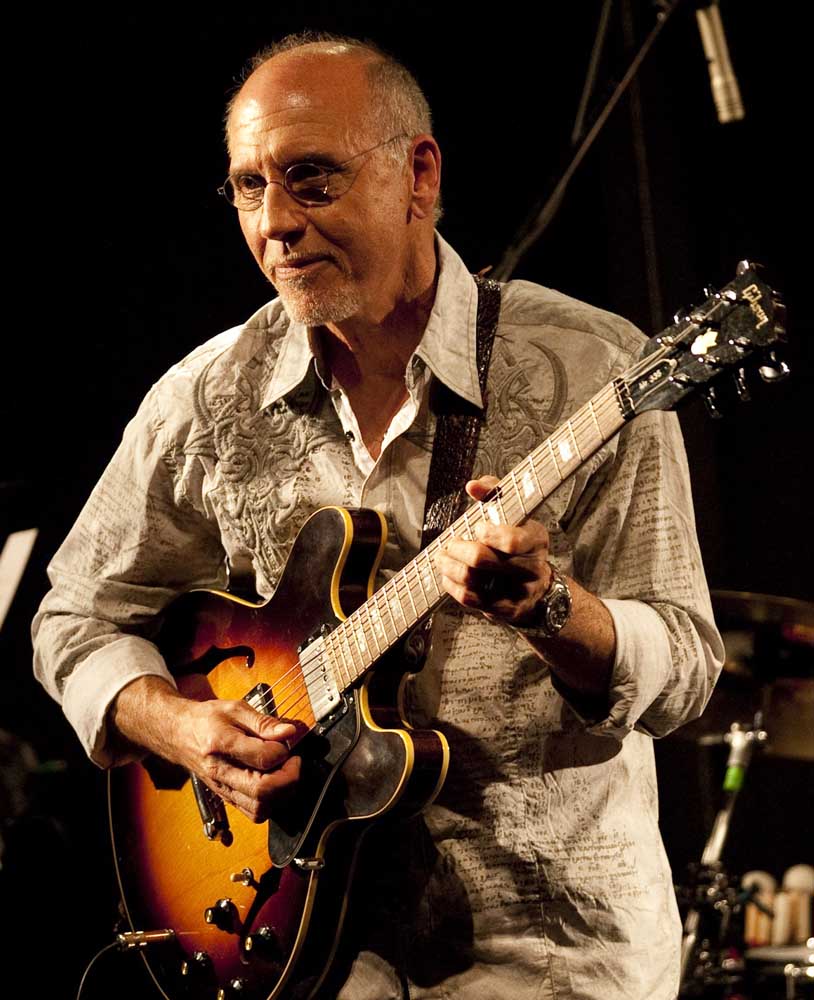Larry Carlton brings chops to Bend
Published 12:00 am Thursday, September 20, 2018

- Jazz and rock guitarist Larry Carlton, known for his extensive solo career and session work in the 1970s with such artists as Steely Dan, Michael Jackson and Joni Mitchell, will perform with a quintet at the Tower Theatre on Monday. (Submitted photo)
Larry Carlton hasn’t written much new music lately.
That’s because the jazz and rock guitarist, known for his instrumental solo career and session work on countless albums by artists such as Steely Dan, Joni Mitchell, Michael Jackson, Quincy Jones and more, hasn’t been recording much lately — at least when it comes to his solo career.
Trending
“My writing process has always been the same from the beginning: When it’s time to record a new project, then I start writing material for that project,” Carlton said recently from his home just outside Nashville. “Sometimes, I don’t start writing for a project until 60 days before the recording sessions. I love that kind of pressure; I love that kind of honesty from me in my writing. So I’m different than some guys that always have a backlog of material they’ve been working on. I haven’t written a new song in a few years now because I don’t have a project.”
He would rather just play, and that aspect of his career is thriving. His next tour, featuring a five-piece band including drums, bass, saxophone and keyboards, includes a stop at the Tower Theatre on Monday. Shortly after, he will head to Europe and Japan.
Carlton said the band may tackle new material — or at least unheard songs — alongside his solo work, songs from his first band The Crusaders and some Steely Dan at the Bend show. And he’s continued to work on special projects and collaborations, including last year’s live-in-studio album with Germany’s SWR Big Band, “Lights Out,” which featured re-imaginings of songs such as “Room 335” and Steely Dan’s “Kid Charlemagne.” But he hasn’t released a solo studio album since “Four Hands and a Heart Christmas” (featuring classic holiday songs) in 2014.
“I think what I miss most about the industry is the place for noncategorized, instrumental music to be played — meaning the smooth jazz market is pretty much the niche for instrumentalists, those of us that don’t sing,” he said. “That market in my opinion is so slim in its musical content that it’s not very exciting for me. Back in the day, I could do an album of original material — whatever I felt like that year — and there were radio stations that would embrace it and then the audience got to hear new music from an artist.”
With the internet and streaming cutting into album sales, Carlton’s approach to recording (or not) isn’t uncommon among older artists. Industrywide changes have affected session work, Carlton’s bread-and-butter for most of the ’70s.
“Everybody’s cutting with loops and a producer and a keyboard, so it’s not like the old days where we would do 15, 18 three-hour sessions a week,” Carlton said. “It just doesn’t exist like it did back then.”
Trending
Session work slowed down for Carlton in the late ’70s, when he re-launched his solo career with his 1978 self-titled album. The record came about by chance.
“In 1977, while I was still doing sessions but I had cut back, I started playing at a local jazz club in Studio City, California,” he said. “And a record producer from CBS Records came in, heard me and said, ‘Do you want to make a record?’ And so my solo career really started by just going out and playing and having executives respond to it. I wasn’t looking for a solo career, I guess is my point. It just happened.”
This seems to be a recurring theme in Carlton’s career. His first solo album, 1968’s “With a Little Help from My Friends,” came about in a similar way: Carlton, then a college student in San Pedro, California, put together a jazz concert at the school that was attended by a producer who showed interest in recording him, he said.
Being in college, Carlton didn’t have much recording time under his belt. That would soon change.
“When I started getting calls for studio work, at that time in the late ’60s and early ’70s, you had jazz-type guitar players who could read music really well, or younger, contemporary guitar players who played more, like I say, contemporary — more rock ’n’ roll, more pop — but they didn’t read,” Carlton said. “And I know that I was definitely one of the first that was young enough to play pop music and rock ’n’ roll music, but also loved jazz and could read. So my career just blossomed.”
Carlton has continued to do session work here and there. Most recently, he added searing guitar to the song “Memo to Willie” on the solo debut from Spinal Tap bassist Derek Smalls (AKA actor Harry Shearer), “Smalls Change (Meditations Upon Ageing).” Notably, the song reunited Carlton with Steely Dan’s Donald Fagen and Jeff “Skunk” Baxter.
Along with live performance, Carlton has gravitated to teaching in recent years through his online platform, Mr. 335 TV — named for the Gibson ES-335 guitar that has become nearly synonymous with his playing.
“Guys wonder how their heroes think when they’re making music,” he said. “And so if I can share some insights, and, well, here’s where my head goes for these kind of chord changes or whatever it is — it’s nice to expose the guys to that.”








